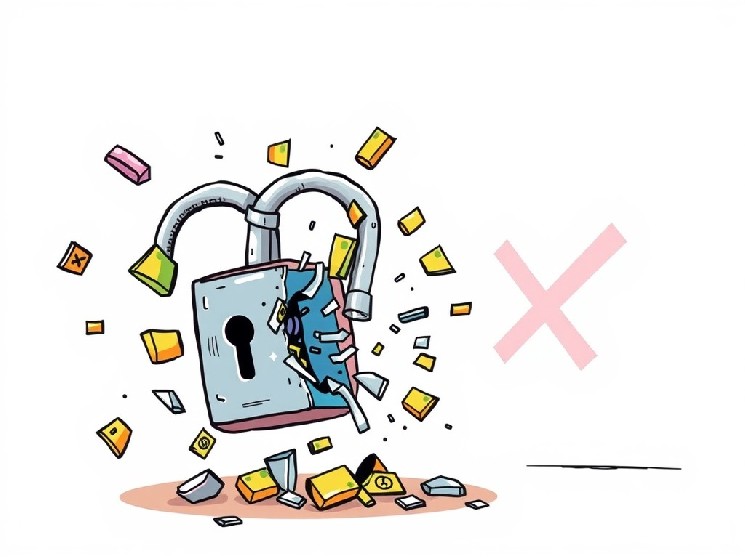The cryptocurrency world is abuzz with alarming news: the CrediX hack has resulted in a significant security breach, costing the decentralized lending protocol approximately $4.5 million. This incident quickly escalated, leading to the surprising deactivation of CrediX’s official X account, sending ripples of concern through the digital asset community.
What Exactly Happened with CrediX?
Blockchain security firm PeckShield was among the first to alert the public about the severe security compromise. They warned users on X that @CrediX_fi, the official X handle for CrediX, had gone dark. This abrupt disappearance followed reports of a substantial fund drain from the protocol.
CrediX operates as a decentralized lending protocol, enabling users to lend and borrow digital assets without traditional intermediaries. Such platforms are cornerstones of the DeFi ecosystem, offering innovative financial services. However, their very nature can sometimes expose them to sophisticated vulnerabilities, as this recent event painfully demonstrates.
The exact mechanics of how the attackers managed to exploit CrediX are still under investigation. Nevertheless, the outcome is clear: a hefty sum of $4.5 million in digital assets was siphoned away, directly impacting the protocol’s stability and user trust.
Why Are Crypto Security Breaches So Frequent?
The crypto security breach at CrediX is not an isolated incident. The decentralized finance (DeFi) sector, despite its rapid growth and innovation, frequently grapples with security challenges. Malicious actors constantly seek new ways to exploit smart contract vulnerabilities, manipulate price oracles, or compromise administrative keys.
These exploits highlight a critical paradox: while decentralization aims to remove single points of failure, the complexity of interconnected protocols can introduce new attack vectors. Each new line of code, each integration, presents a potential loophole for determined hackers.
The immediate deletion of CrediX’s X account suggests an attempt by the team to contain misinformation or prevent further compromise of their communication channels. However, it also leaves many questions unanswered for their users and the broader community.
How Can We Prevent Digital Asset Theft?
Given the persistent threat of digital asset theft, both users and project developers must adopt stringent security practices. For protocols, rigorous auditing of smart contracts by independent security firms is paramount before deployment. Continuous monitoring for suspicious activity post-launch is also crucial.
Users, on the other hand, play an equally vital role in safeguarding their investments. Here are some actionable insights:
- Always do your research: Before interacting with any DeFi protocol, thoroughly investigate its security history, audit reports, and team reputation.
- Use strong, unique passwords: Enable two-factor authentication (2FA) wherever possible, especially for exchange accounts.
- Be wary of phishing attempts: Verify official communication channels and never click on suspicious links.
- Consider hardware wallets: For significant holdings, cold storage offers superior protection against online threats.
- Stay informed: Follow reputable security firms and news outlets for real-time alerts on new exploits and vulnerabilities.
These steps can significantly reduce your exposure to common attack vectors in the volatile crypto landscape.
What’s Next for DeFi Exploits?
The CrediX incident serves as a stark reminder of the inherent risks in the DeFi space and the ever-evolving nature of DeFi exploits. While the innovation in decentralized finance continues to push boundaries, security must remain at the forefront of every development and user interaction.
As the industry matures, collaborative efforts between security researchers, developers, and the community will be essential to build more resilient and trustworthy protocols. Only through collective vigilance can we hope to mitigate the impact of such devastating hacks and foster a safer environment for digital assets.
The path forward demands continuous learning and adaptation from everyone involved in the crypto ecosystem.
Frequently Asked Questions (FAQs)
Q1: What is CrediX?
A1: CrediX was a decentralized lending protocol that allowed users to lend and borrow digital assets without the need for traditional financial intermediaries.
Q2: How much money was lost in the CrediX hack?
A2: The security breach resulted in approximately $4.5 million in digital assets being siphoned away by attackers.
Q3: Why did CrediX delete its X account?
A3: CrediX deactivated its official X account (@CrediX_fi) following the security breach, likely as an immediate measure to contain the situation, prevent further compromise of communication channels, or manage the fallout.
Q4: What are common types of crypto security breaches?
A4: Common crypto security breaches include smart contract exploits, phishing attacks, private key compromises, oracle manipulations, and rug pulls. The CrediX hack is an example of a significant protocol-level exploit.
Q5: How can users protect themselves from digital asset theft?
A5: Users can protect themselves by doing thorough research on protocols, using strong unique passwords with 2FA, being wary of phishing, considering hardware wallets for large holdings, and staying informed about the latest security threats.
The CrediX hack is a critical event that underscores the importance of security in the crypto space. If you found this article insightful, please share it with your network on social media. Let’s work together to raise awareness about digital asset security and help others stay informed and protected.
To learn more about the latest crypto market trends, explore our article on key developments shaping decentralized finance security and future price action.
Disclaimer: The information provided is not trading advice, Bitcoinworld.co.in holds no liability for any investments made based on the information provided on this page. We strongly recommend independent research and/or consultation with a qualified professional before making any investment decisions.


